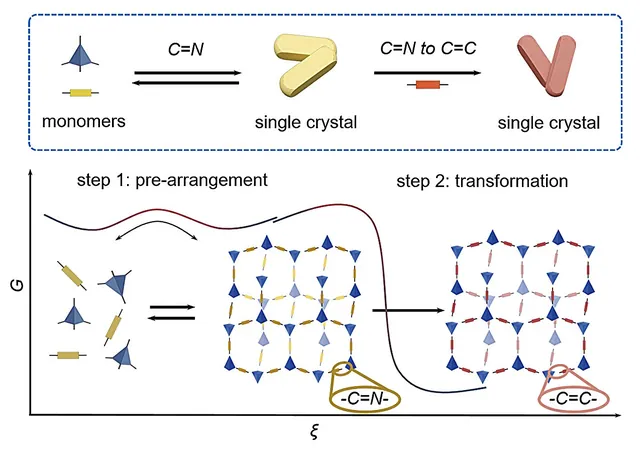
Groundbreaking Breakthrough: Chinese Scientists Create Single-Crystal sp² Carbon-Linked Covalent Organic Frameworks!
2025-01-06
Author: Nur
Overview
In an exciting development within the realm of materials science, researchers in China have unveiled a groundbreaking imine-to-olefin transformation strategy that successfully synthesizes single-crystal sp² carbon-linked covalent organic frameworks (sp²c-COFs). This innovative approach promises a wealth of applications in various fields ranging from gas storage to advanced electronics!
What are Covalent Organic Frameworks?
Covalent Organic Frameworks (COFs) are crystalline, porous polymers constructed from organic molecules interconnected by robust covalent bonds. Their structural design allows for numerous potential uses, including gas separation, sensing, drug delivery, and organic electronics, making them essential in cutting-edge industries.
The Significance of sp²c-COFs
Among the various classes of COFs, sp²c-COFs stand out due to their incorporation of sp² hybridized carbon. These frameworks are getting significant attention for their role in organic semiconductors, primarily because the strong C=C (double bond) connections provide enhanced electronic conductivity, making them superior to traditional C=N-linked COFs.
Challenges in Synthesis
Despite their potential, a significant challenge has been the low reversibility of olefin bonds, which has historically limited researchers to creating primarily polycrystalline or amorphous structures.
The Innovative Research Team
The new synthesis method developed by a dynamic research team led by Prof. Zhang Tao from the Ningbo Institute of Materials Technology and Engineering (NIMTE), in collaboration with Prof. Zhang Zhenjie from Nankai University, effectively overcomes this hurdle.
Published Findings
Published in the esteemed journal *Nature Chemistry*, the study utilized advanced techniques such as high-resolution transmission electron microscopy (HR-TEM) and continuous rotation electron diffraction (cRED) to characterize the structures of these single crystals.
Enhancements in Properties
The transition from imine to olefin linkages significantly enhances the π-conjugation in sp²c-COFs, promoting extensive electronic delocalization. The findings are striking: the newly synthesized single-crystal sp²c-COFs exhibit an impressive electron spin density, revealing a remarkable room-temperature, metal-free ferromagnetism of 8.6 × 10⁻³ emu g⁻¹.
Implications for the Future
This discovery could pave the way for revolutionary advancements in electronic devices that rely on magnetic properties. By successfully producing two high-quality single-crystal sp²c-COFs, this research not only highlights the potential versatility of their synthesis method but also addresses existing bottlenecks in the field.
Conclusion
As the demand for advanced organic semiconductors continues to grow, these insights are likely to catalyze further developments and applications across multiple sectors, ushering in a new era in materials science. Stay tuned, as this captivating journey in organic materials is just beginning!




 Brasil (PT)
Brasil (PT)
 Canada (EN)
Canada (EN)
 Chile (ES)
Chile (ES)
 Česko (CS)
Česko (CS)
 대한민국 (KO)
대한민국 (KO)
 España (ES)
España (ES)
 France (FR)
France (FR)
 Hong Kong (EN)
Hong Kong (EN)
 Italia (IT)
Italia (IT)
 日本 (JA)
日本 (JA)
 Magyarország (HU)
Magyarország (HU)
 Norge (NO)
Norge (NO)
 Polska (PL)
Polska (PL)
 Schweiz (DE)
Schweiz (DE)
 Singapore (EN)
Singapore (EN)
 Sverige (SV)
Sverige (SV)
 Suomi (FI)
Suomi (FI)
 Türkiye (TR)
Türkiye (TR)
 الإمارات العربية المتحدة (AR)
الإمارات العربية المتحدة (AR)